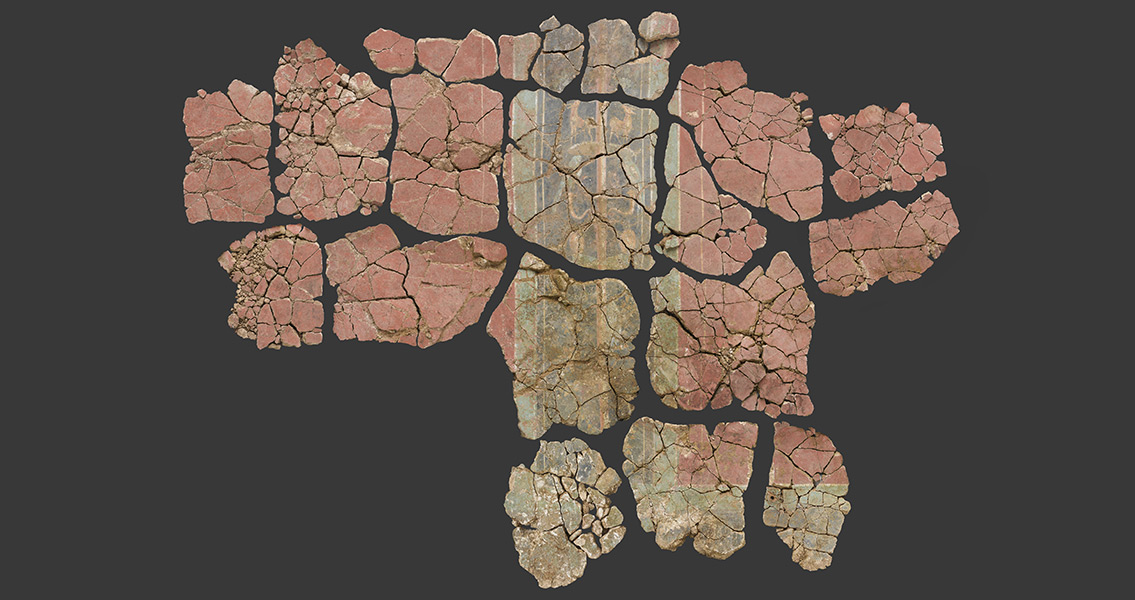<![CDATA[Archaeologists conducting fieldwork ahead of the construction of a new office development have come across an ornate Roman-era fresco six meters below ground. Museum of London Archaeology (MOLA) remarked in a recent press release that a team of its field archaeologists working at 21 Lime Street had made the discovery, which dates to the late first century CE and was likely created during the first few decades of London’s existence. MOLA note that the ornate fresco, which would have doubtlessly been part of a residence for an affluent Roman citizen at the time, is one of the earliest of its kind to survive from the time period. The 1.5 meter by 2.5 meter fragment of fresco was found face-down and in 16 individual sections but otherwise intact, and was excavated with the soil encasing the plaster in order to protect and support the fresco until the soil’s removal. The wall painting had likely fallen due to a massive construction project during the Roman era, when the 2nd Forum Basilica was being constructed in 100 CE. The largest Roman building ever constructed besides those erected south of the Alps, the basilica was built to be London’s main civic center. The area meant for the construction would have been flattened, with the wall bearing the newly-discovered fresco being toppled deliberately to pave the way for the basilica, which was then built directly atop it. This construction method resulted in the fresco being preserved for close to two millennia. Thought to have been part of a foyer or reception room for greeting and entertaining guests, the fresco bears a depiction of woodland creatures such as deer and birds among a backdrop of fruit, vines, and trees, with a background of black and green vertical panels in the central portion. Red panels outlined in a cream-colored pigment flank the center, bearing the telltale marks of having been skillfully hand-painted using natural earthen pigments. The only exception to this is the cinnabar used to highlight a portion of a vine stem in red; the pigment, better known as mercuric sulfide, would have been sourced from a mine in Spain – and would have been available only at a premium. The fresco was so well-preserved that MOLA researchers found a flaw in the craftsmanship indicating that there may have been more than one individual working on it at the time of its creation. A pre-prepared template might have been laid down on the wall before the application of the paint, indicating that someone had been filling in the template. A mistake was made – one that was only correctable by painting the entire middle panel over again – and evidence of this is detectable on the fresco. MOLA remarked in its press release that its researchers would be studying the fresco further in order to learn more about the Roman history of London. For more information: MOLA Featured Image © MOLA]]>
Roman Fresco Unearthed by London Archaeologists
